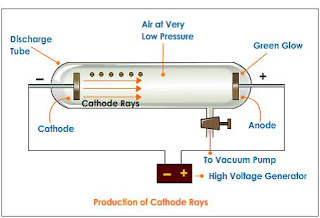

The anode both Crooke’s dark space and Faraday’s dark space increases in sizeĪnd the positive column is divided into a number of luminous discs separatedįrom each other by dark spaces. Pressure is reduced to about 0.05mm of mercury the negative glow shift towards The positive column gets reduced in size and A dark space appears between the cathode glow and negative glow. Pressure drops to 1 mm of mercury the negative glow gets separated from theĬathode glow. The space between the positive column and the negative glow is dark and is called Faraday’s dark space. When the pressure decreases to about 3 mm of mercury the positive column gets detached from the cathode where a bluish glow called the negative glow is seen. Pressure is reduced to about 5mm of mercury the discharge widens until it fills If the discharge tube contains air the discharge is a pink colour. Pressure is reduced to about 10 mm of mercury and a potential difference ofĪbout 10,000 V is applied between the electrodes, the discharge occurs in theįorm of coloured streaks or streamers travelling from the cathode to the anode.
#CATHODE RAY EXPERIMENT WHEN SERIES#
This discharge is in the form of a series of white sparks travellingĪlong an irregular path through the tube. Order of 50,000 V to 1,00,000 V is necessary to pass the discharge through the Pressure of the gas is equal to the atmospheric pressure the resistance of the

If discharge tube is highly evacuated so that the pressure in the tube is of the order of 0.01 mm of mercury, certain rays are emitted by the cathode in the form of bluish streamers. This study of the discharge can be done at different pressures. The pressure can be read from the pressure gauge and can be made constant. The tube is filled with air or any other gas in which the electric discharge at different low pressures is to be studied.Īs the vacuum pump is operated the pressure of the gas in the discharge tube is gradually reduced and the discharge goes through different stages. voltage of 10,000 to 15,000 volts can be applied between the electrodes. Electrodes are disc-shaped made up of aluminium are sealed in the tube at two ends. The tube is closed at both ends and has a side tube connected to a vacuum pump and a pressure gauge. The discharge tube consists of a thick-walled glass tube about 40 to 50 cm in length and about 3 to 4 cm in diameter. The Discharge tube is a glass tube used to study the flow of electricity through gases at low pressures.


 0 kommentar(er)
0 kommentar(er)
